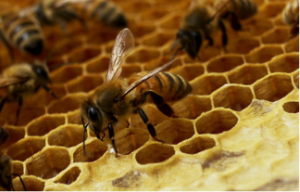By Kelsey Gray
Edited by Mike Pablo and Anna Chiarella
Communication is essential for surviving and thriving in our daily lives. We communicate with others all the time. Maybe you enjoy talking about books, shopping, writing, video games, traveling? Perhaps you prefer topics such as exercise, studying, sports, relationships, or other hobbies, such as playing games like solitaire cube?
Regardless of your favorite topic, it is likely you share that interest with others and experience it yourself using several of the five senses. We may see the person we are talking with or observe text on a screen. We may hear the sound of someone’s voice or other noises that alert us to the fact we are being contacted. We may taste a meal someone has made for us, feel the softness of a blanket, or smell a scent that brings up old memories. Each of these experiences offers their own unique form of communication.
Just as we interact with others and with our environments, other organisms do the same. Last week, Yitong wrote about how bumblebees detect electric fields generated by flowers using their body hairs. In other words, they feel it! Honeybees determine the location of their food in a different way. Foraging honeybees need to share information about the direction, distance, and quality of the food with the rest of the members of their hive.
Similar to how humans can teach and learn using dance, honeybees communicate information about their food using dance language. This is accomplished using two primary dances: the Round dance when food is nearby, and the Waggle dance, which describes food that is farther away from the hive. There is a lot of “encoded” information in the Waggle dance. For example, how vigorously, or how “excitedly”, the bees perform on the “dance floor” corresponds with the quality of the food. This lets the hive know whether there is nectar or pollen present.
These findings about the dance language of bees were so important that Dr. Karl von Frisch won the Nobel Prize in Physiology or Medicine in 1973 for being one of the first scientists to decode the meaning behind the Waggle dance. His research gave everyone a peek into the social behaviors of honeybees and made him a founder of ethology – the study of social relationships in animals. Recently, researchers in Germany have continued this research and created a RoboBee to mimic the dance and test whether the bee robot is able to tell other bees where to find the food!
Next time you want to have dinner with your friends in the next town over, give the Waggle dance a try!

